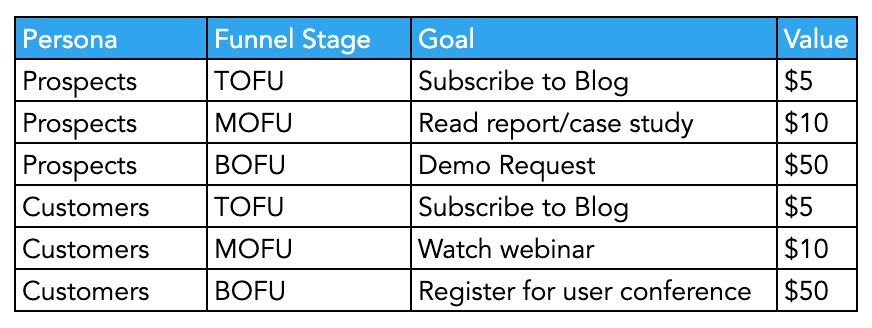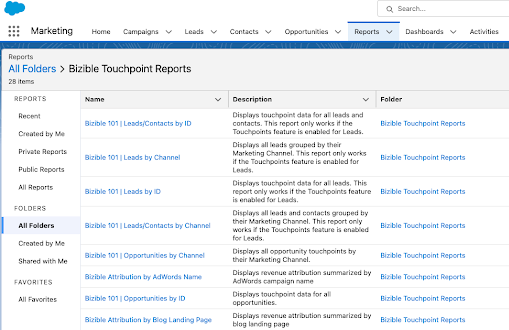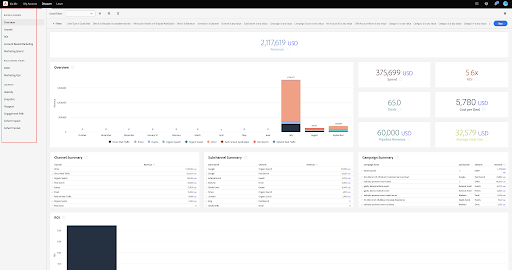GA goals uniquely show how the value of a website is growing, over time. Here’s how we set up Google Analytics goals:
>> Related: How to Audit Your Google Analytics Account <<
How to strategically pick Google Analytics goals
Google now allows 20 goals per property. That’s plenty. In fact, I’d argue it’s too many for most teams, because the temptation quickly becomes “what 20 things can we measure!?” Twenty arbitrary KPIs are annoying to set up and pretty meaningless to monitor.
Instead, ask “what do we want visitors to do on our website?” We don’t need to chase clicks, time on site, or pages visited, unless that matches our strategic goal. (And most of us want visitors to efficiently hit a page, quickly understand what we offer, and convert. A lot of clicks don’t make a site effective. /rant)
How to identify those MVP KPIs? Create a simple TOFU/MOFU/BOFU funnel for each key audience.
Most SaaS companies are going to carve audiences into prospects and customers. (We could expand this to other personas, like investors or media… whatever is important to sales’ and marketing’s goals.)
Then layer in simple, clear, and valuable calls to action for each audience at each stage. (Yes, this will closely align to our buyer’s journey.)
Now, assign $ values to GA goals
It’s lovely to see those goal counts grow. It’s especially interesting to compare them quarter to quarter, quarter over quarter, year to year, etc. But we can get addicted to chasing conversion quantities. If we’re not careful, we’ll over-promote TOFU CTAs because they’re easy to grow. Burying BOFU goals with ebook offers creates a disconnect: we feel great about the trend lines in Google Analytics, but we’re not passing more MQLs to reps.
How to mitigate? Add a $ value to goals to reflect their relative value. This is a lot like lead scoring, and unless this is an eCommerce site, it’s basically Monopoly money. But it can show how, over time, the website is growing more valuable and delivering more valuable engagement.


The exact dollar amounts don’t matter. What matters is the relative weighting we’re giving each goal. This is how to show the site is growing in value, not just conversions.
(BTW out of the box, none of this information passes through the marketing automation platform, and it never gets associated with the lead. It’s strictly for evaluating the website.)
Building GA goals
If the goals are simple, like clicking certain links or hitting certain pages, they’re easy to build with some documentation. (Of course we want to test all of this in sandbox first!)
But as soon as you feel out of your depth (such as needing to creating custom events, firing scripts in Google Tag Manager, or creating virtual page views) work with somebody who knows what they’re doing. We recently helped a client clean up 50 Google Tag Manager containers. 🤯 This isn’t a herculean lift, just technical. And it should take ~a week to build.
GA goals built? Time to build a roadmap for Marketing’s Google Analytics strategy >




